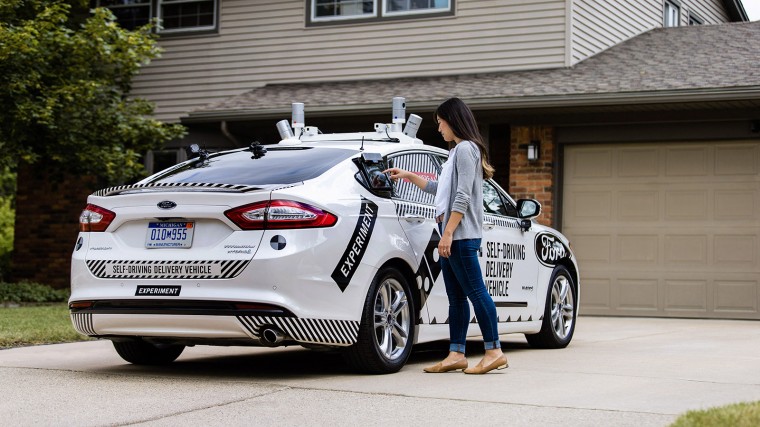
Domino’s and Ford have announced that they’re to start tests in Ann Arbor, Michigan, where driverless cars are used to deliver meals—only, the cars won’t be driving autonomously. And while that may sound silly (and, on one level at least, it is) it’s actually an important experiment into human interactions with robotic systems.
As the Verge points out, the trial isn’t a test of vehicular autonomy, but a study in customer reactions. Huddled inside the pizza-hauling Ford Fusion will be a driver, who will do all the driving, as well as a team of researchers. The latter will watch customers as they walk out of their home to pick up their dinner. Customers who are selected to get their food delivered by the vehicles will be sent a code that must be punched in via touchscreen on the vehicle, allowing them access to a warmed compartment in the back of the car containing their prized pie.
What’s the point? According to a Domino’s statement, the company wants to “lead research into how self-driving vehicles may play a role in the future of pizza delivery,” adding that it’s “interested to learn what people think about this type of delivery” with particular focus on “the last 50 feet of the delivery experience.” In other words, how do customers feel about picking up where a robot currently falls short, and heading out to the sidewalk to finish the delivery for themselves?
It’s easy to scoff at that—especially the prospect of standing next to a pizza-delivery car containing several people, none of whom are willing to fetch your food. But it’s an interesting area of research, which will become increasingly important in the future. Humans and robots are going to need to learn to work together far better than they do right now, especially in the workplace, where the two will coexist for decades to come. And that interaction will require playing to strengths to support each other’s weaknesses—which right now for Domino’s and Ford is getting the pizza the last few feet to your door.
[“Source-technologyreview”]


